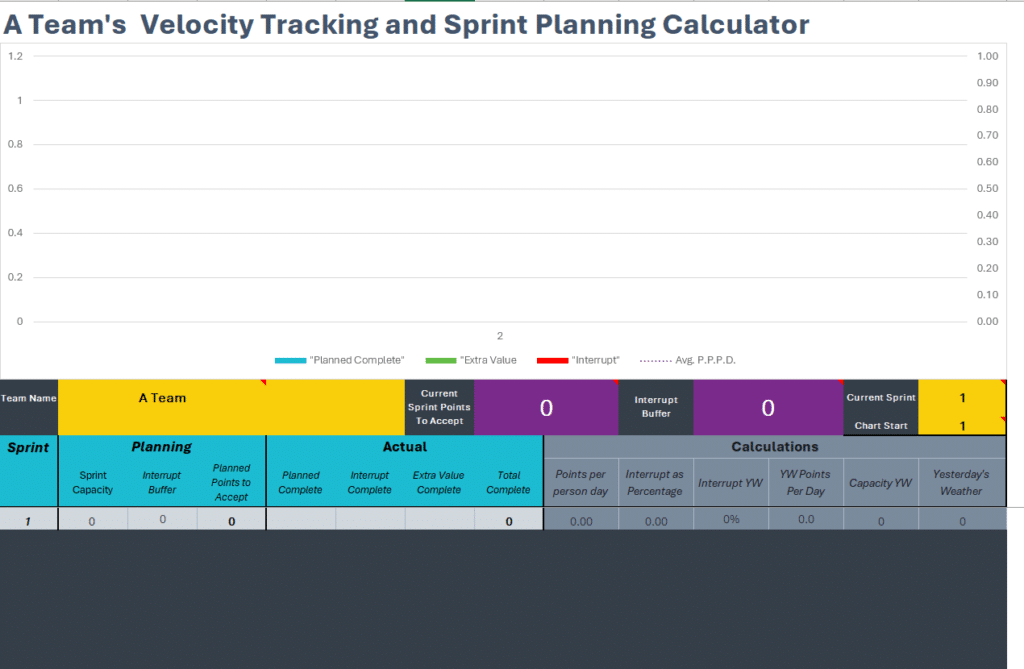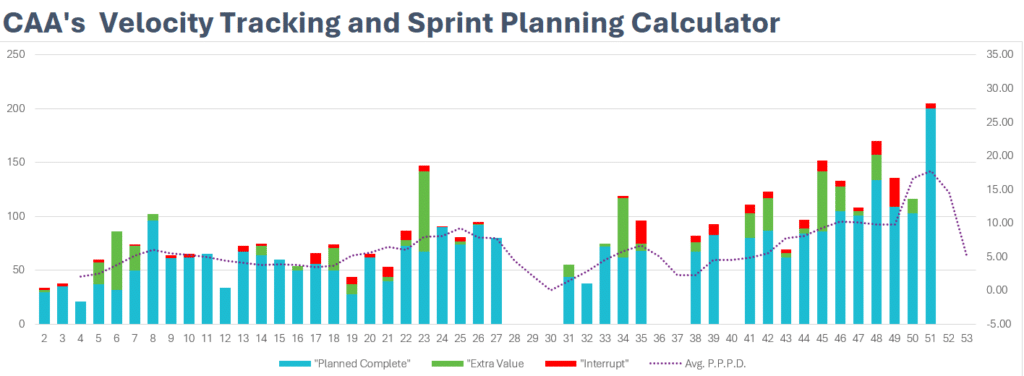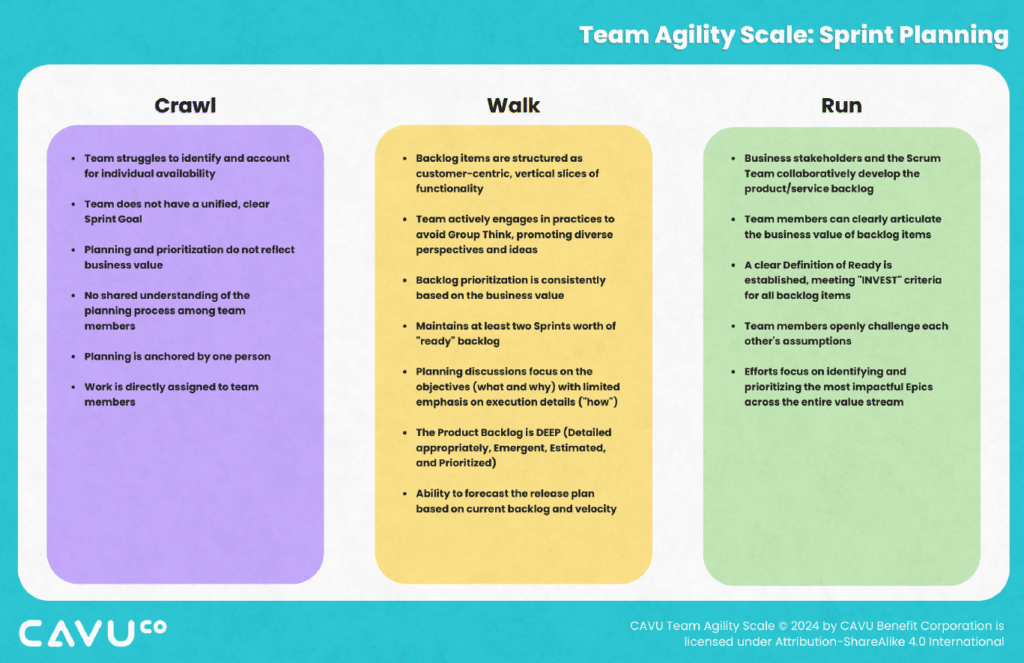Sprint Planning is pivotal for team success and project progress. Today, I’ll walk you through how to leverage our free Sprint Planning Toolkit to optimize your team’s performance and ensure that your sprints are set up for success. The toolkit is designed to help Agile teams, like the CAVU’s Development Team (CAA), streamline their Sprint Planning process, making it more efficient and effective.
Introduction to the Toolkit

The Sprint Planning Toolkit is an Excel-based solution containing critical components for planning and executing sprints. Upon opening your toolkit directory, you’ll find, among other things, an Excel spreadsheet titled “Sprint Planning,” this is the core of the toolkit and a powerful tool in your planning arsenal.
The Sprint Planning toolkit comprises two main tabs:
- Velocity and Planning Data: This section offers a historical view of your team’s velocity, showcasing planned completions (blue line), extra value earned during the Sprint (green line), and any interruptions (red line) encountered.
- Team Capacity Data: Here, you delve into your team’s capacity, understanding how many person-days are available and planning accordingly.

Setting Up Your Sprint
- Entering Team and Sprint Information: Start by entering your team’s name. For instance, “A Team”. Next, input the current sprint number; for example, if you’re on sprint 51, that’s what you’ll note.


- Adjusting Charts: The toolkit allows you to alter the starting Sprint for calculations affecting the charts, providing flexibility in tracking and planning.

- Planning New Sprints: When transitioning to a new Sprint, simply update the Sprint number, which, for our example, would change from 51 to 52, signifying the move to the next Sprint.
- Tracking: At the end of each Sprint, you’ll enter the following information into the proper row on the spreadsheet
- Planned Complete: How many Story Points did you complete that were committed to at the end of your previous Sprint planning.
- Interrupts: How many points of interrupt did your team complete during your Sprint
- Extra Value: How many points did your team complete in the Sprint as a result of completing work early
Utilizing Capacity and Planning Data

- Understanding Team Capacity: Calculate your team’s total capacity in person-days, considering each member’s availability. Adjust for any days off, ensuring accurate capacity calculations for the Sprint. You can do this by simply entering the days that each team member will be working during the Sprint on the Team Capacity tab.
- Allocating Sprint Capacity: Based on past data and current Team Capacity, the toolkit suggests an interrupt buffer and points to bring into the Sprint. It assists in making informed decisions about workload and sprint commitments.

- Reviewing Calculations: The toolkit includes calculations on the right-hand side, offering insights like points per person-day and interrupt buffer size. These figures help in refining Sprint Planning, although they’re not frequently adjusted.

The Importance of Charts and Data Entry

- Charting Progress: The toolkit visualizes your Sprint Planning and historical performance, offering a clear picture of trends, achievements, and areas for improvement.
- Data Entry for Sprint Review: Enter actuals such as planned completion, interrupts, and extra value at the end of each Sprint. This practice keeps your historical data up-to-date, providing a solid foundation for future planning.
Other Tools
In addition to the Sprint Planning Toolkit spreadsheet, CAVU provides two invaluable PDF resources to further enhance your team’s Sprint Planning effectiveness. Let’s delve into how these resources can complement your Sprint Planning process.
Potential Problems and Coaching Advice

One of the PDFs serves as a quick guide to common problems you might encounter during Sprint Planning, complete with coaching advice. This guide is crucial for Scrum Masters and Agile Coaches to preemptively identify potential issues and strategize solutions, ensuring a smoother Sprint Planning session. By leveraging this guide, you can foster a more resilient and Agile team, capable of navigating the complexities of Sprint Planning with ease and efficiency.
Schedule and Assessment Rubric

The second PDF focuses on providing a schedule and an assessment rubric to help you assess your current team’s state effectively. This resource is particularly beneficial for Agile teams looking to refine their processes and improve sprint outcomes. The schedule aids in planning sprint activities more systematically, while the assessment rubric offers a structured approach to evaluating the team’s performance and identifying areas for improvement.
Final Thoughts
Effective sprint planning is an art refined through practice, and the CAVU Sprint Planning Toolkit is designed to support this process. By accurately entering and reviewing your team’s data, you can enhance your Sprint Planning, leading to more successful and predictable sprint outcomes.
Remember, Agile is about adaptability and continuous improvement. Use this toolkit to its fullest, but also remain open to adjustments based on your team’s unique experiences and challenges. Happy Sprinting!
Download the Sprint Planning Toolkit









